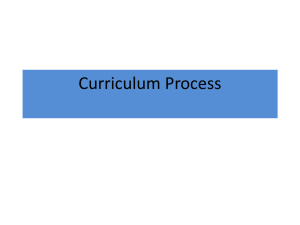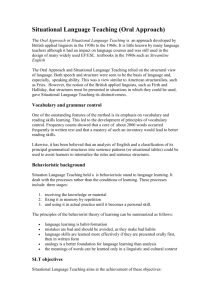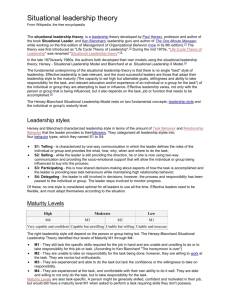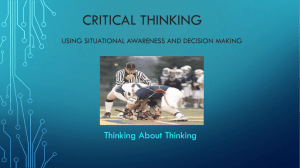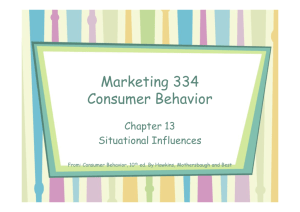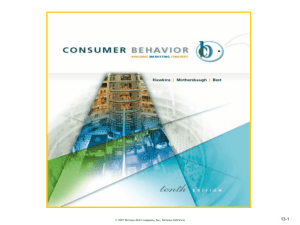Office of Operations, Security, and Preparedness
advertisement
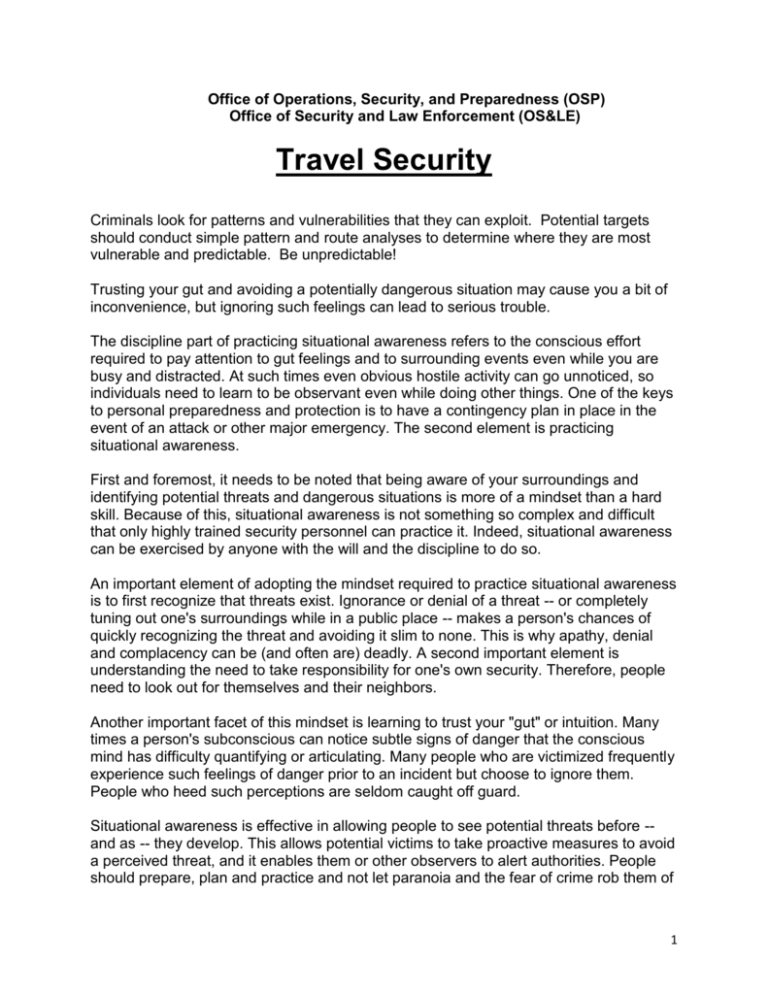
Office of Operations, Security, and Preparedness (OSP) Office of Security and Law Enforcement (OS&LE) Travel Security Criminals look for patterns and vulnerabilities that they can exploit. Potential targets should conduct simple pattern and route analyses to determine where they are most vulnerable and predictable. Be unpredictable! Trusting your gut and avoiding a potentially dangerous situation may cause you a bit of inconvenience, but ignoring such feelings can lead to serious trouble. The discipline part of practicing situational awareness refers to the conscious effort required to pay attention to gut feelings and to surrounding events even while you are busy and distracted. At such times even obvious hostile activity can go unnoticed, so individuals need to learn to be observant even while doing other things. One of the keys to personal preparedness and protection is to have a contingency plan in place in the event of an attack or other major emergency. The second element is practicing situational awareness. First and foremost, it needs to be noted that being aware of your surroundings and identifying potential threats and dangerous situations is more of a mindset than a hard skill. Because of this, situational awareness is not something so complex and difficult that only highly trained security personnel can practice it. Indeed, situational awareness can be exercised by anyone with the will and the discipline to do so. An important element of adopting the mindset required to practice situational awareness is to first recognize that threats exist. Ignorance or denial of a threat -- or completely tuning out one's surroundings while in a public place -- makes a person's chances of quickly recognizing the threat and avoiding it slim to none. This is why apathy, denial and complacency can be (and often are) deadly. A second important element is understanding the need to take responsibility for one's own security. Therefore, people need to look out for themselves and their neighbors. Another important facet of this mindset is learning to trust your "gut" or intuition. Many times a person's subconscious can notice subtle signs of danger that the conscious mind has difficulty quantifying or articulating. Many people who are victimized frequently experience such feelings of danger prior to an incident but choose to ignore them. People who heed such perceptions are seldom caught off guard. Situational awareness is effective in allowing people to see potential threats before -and as -- they develop. This allows potential victims to take proactive measures to avoid a perceived threat, and it enables them or other observers to alert authorities. People should prepare, plan and practice and not let paranoia and the fear of crime rob them of 1 the joy of life. Situational awareness serves as one of the key building blocks of effective personal security. By using these basic safety tips and your own common knowledge, you can help protect yourself and your family while traveling: ❑ Make sure your vehicle is in good working order. ❑ If possible, vary your travel routes and times. ❑ Be familiar with your route and have alternate routes. ❑ Be alert to your surroundings and have a plan. ❑ Check regularly for surveillance. If you suspect that you are being followed, never lead the person back to your home or stop and confront. Drive to the nearest safe haven, i.e., police station, fire station, mall, or public location. Note the license plate number, color, make, model, and any information printed on the vehicle that might be useful in tracing the vehicle or its occupants. Always report these incidents immediately to the VA IOC, local law enforcement authorities, OS&LE and the VA OIG Special Agents. ❑ When in your car, always keep the doors locked. Any time you drive through areas containing stoplights, stop signs, or anything that significantly reduces vehicular speed, keep your windows up. ❑ When driving, select an outer lane so you can escape if necessary by driving over a curb or median. ❑ Leave ample maneuvering space between your vehicle and the one in front of you. Stop with enough distance to see the car’s tires in front of you touching the ground. This will leave enough room to drive around that car. ❑ If you are approached by a suspicious person(s) while you are stopped, do not roll down windows; drive away quickly. ❑ If you are being harassed by another driver, go to the nearest safe haven, i.e., police station, fire station, or public location. Once you find a place of safety, don’t worry about using a legal parking space. Park as close as you can and get inside fast!. ❑ If another driver tries to force you to pull over or to cut you off, keep driving and try to get away. Try to note the license plate number of the car and a description of the car and driver. If this effort places you in danger, don’t do it. The information is not as important as your safety. ❑ Never pick up hitchhikers! ❑ When you park, look for a spot that offers good lighting and is close to a location where there are a lot of people. Lock valuables in the trunk, and lock all doors. ❑ Always check your vehicle inside and out before entering it. If you notice anything unusual, do not enter the vehicle. 2 ❑ Extra precautions are necessary when shopping. If you take packages out to lock in your trunk, and then plan on returning to the stores to do more shopping, it may be a good idea to move your car to another section of the parking lot or street. The criminal knows that you will be coming back and can wait to ambush you. By moving your car, you give the impression you’re leaving. If you think you are being followed, do not go back to your car. Return to the safety of the occupied shopping area or office building and contact the authorities. ❑ If you have car trouble on the road, raise your hood. If you have a radio antenna, place a handkerchief or other flag there. ❑ When people stop to help, don’t get out of the car unless you know them or it’s the police. Ask the “Good Samaritan” to stop at the nearest service station and report your problem. ❑ If you are in a parking lot or parked on the street and have trouble, be wary of personal assistance from strangers. Go to the nearest telephone and call a repair service or friend for assistance. If you feel threatened by the presence of nearby strangers, lock yourself in your car and blow the horn to attract attention of others. 3

